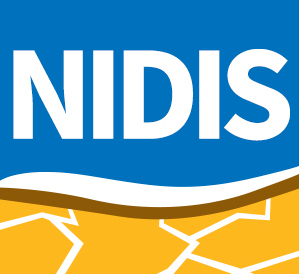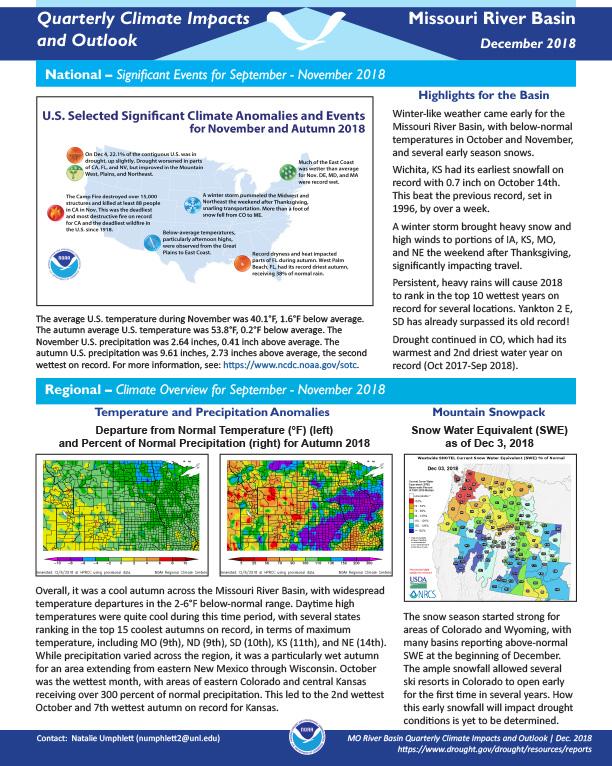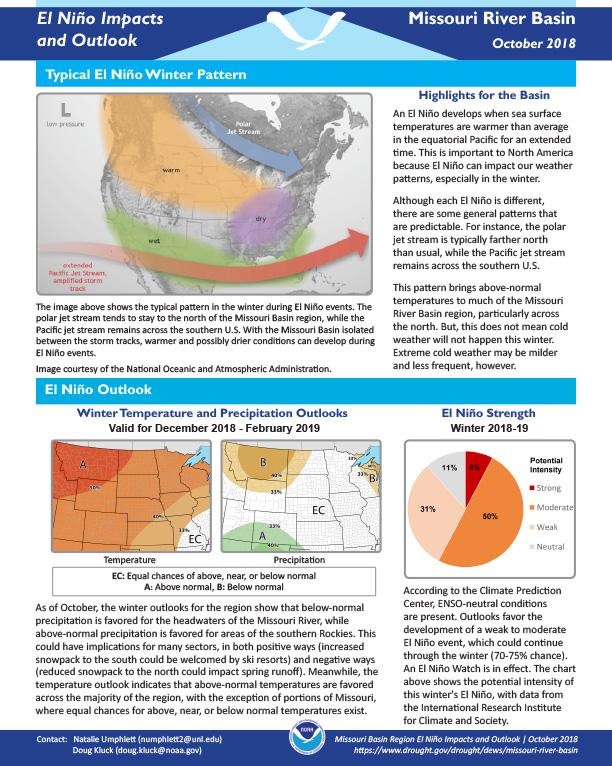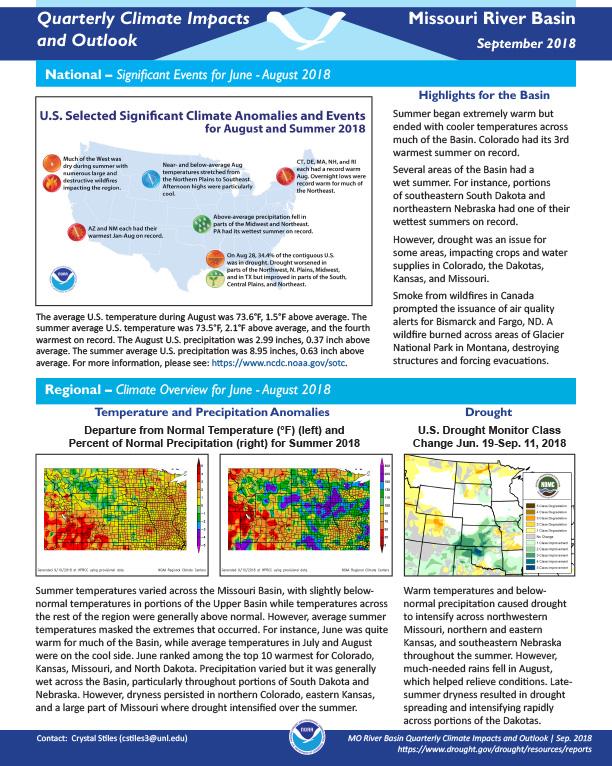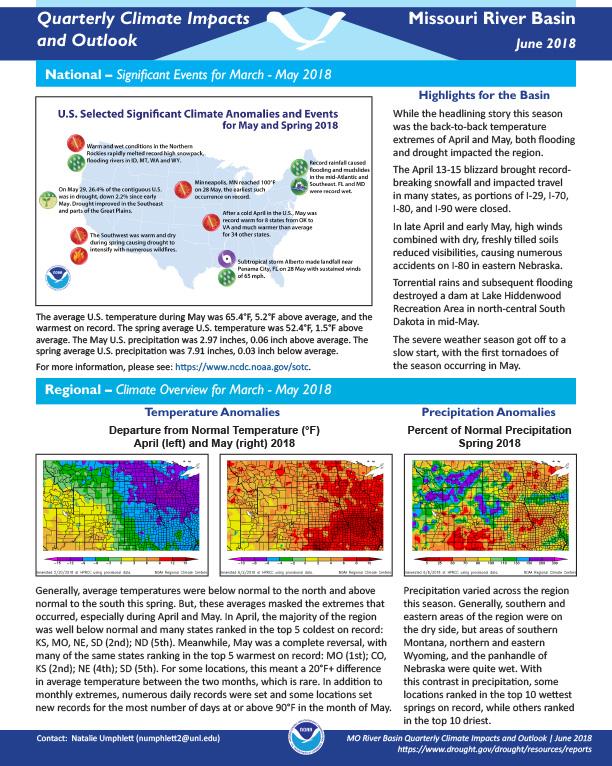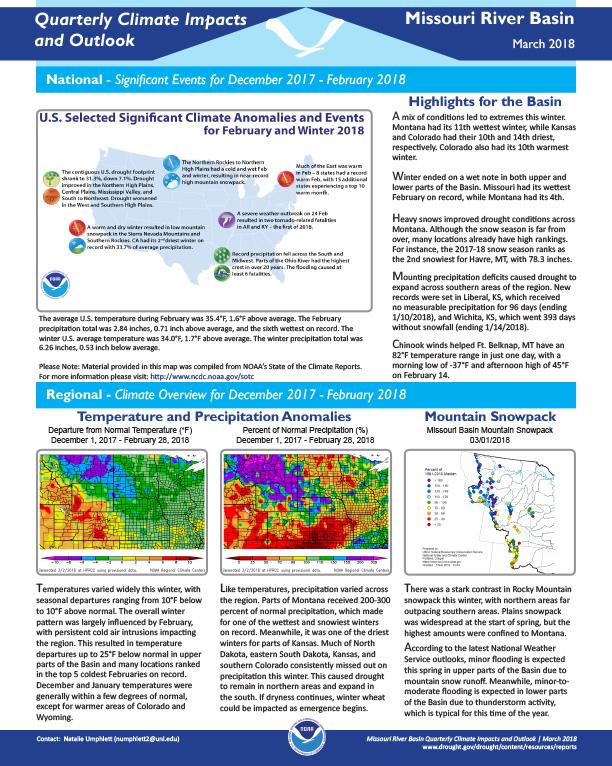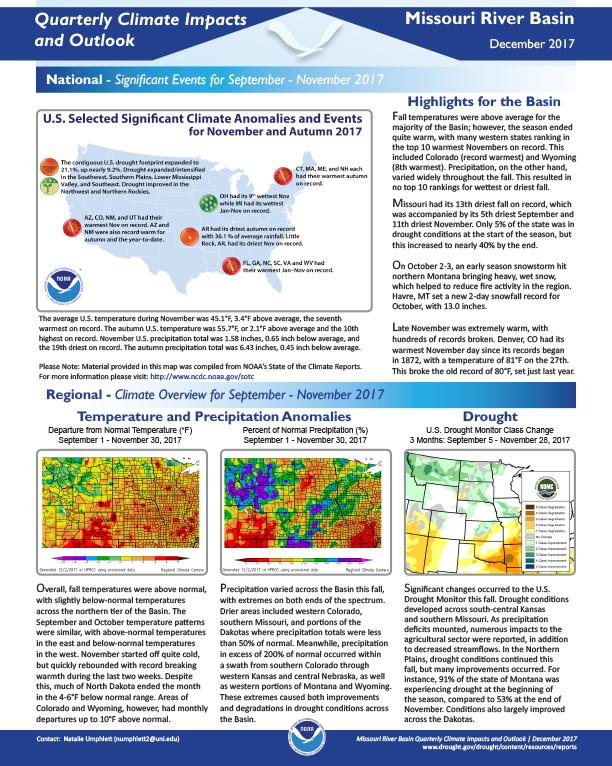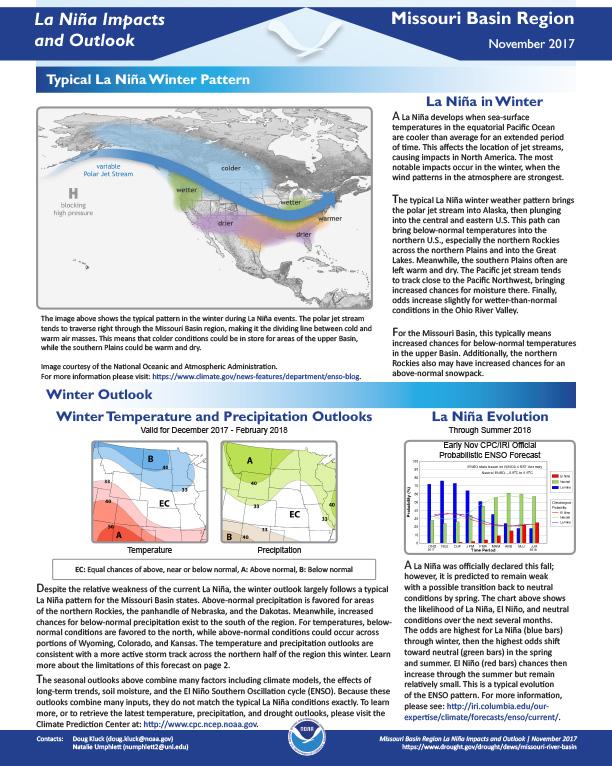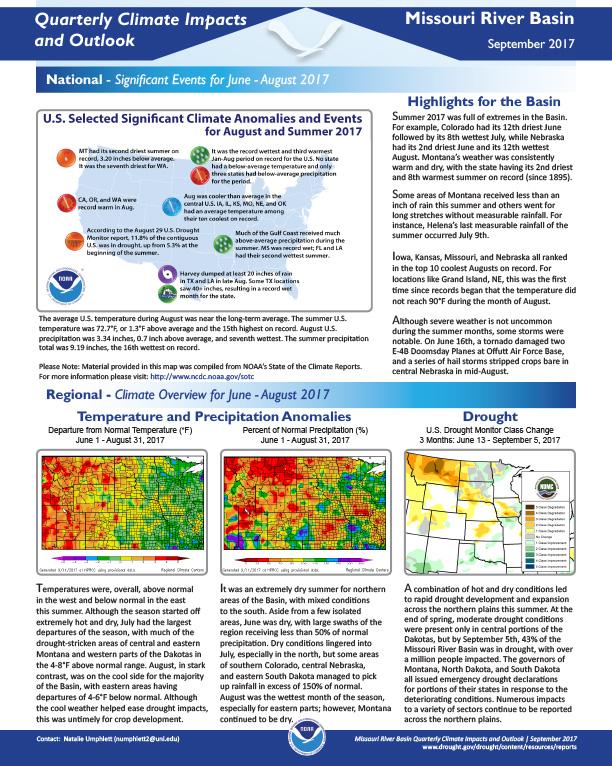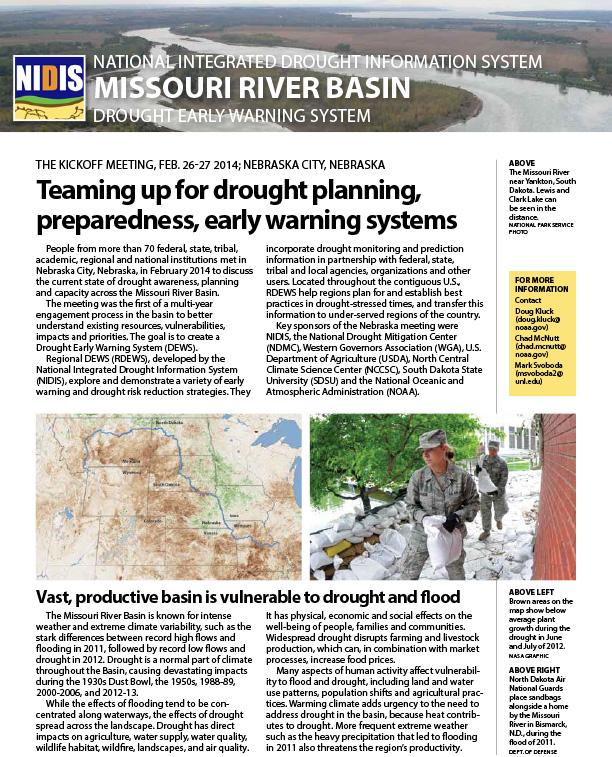Quarterly Climate Impacts and Outlook for the Missouri River Basin September – November 2018. Dated December 2018.
Overall, it was a cool autumn across the Missouri River Basin, with widespread temperature departures in the 2-6°F below-normal range. While precipitation varied across the region, it was a particularly wet autumn for an area extending from eastern New Mexico through Wisconsin.
Provides a definition of El Nino; the outlook for winter temperatures and precipitation; potential winter and spring impacts; and a look back at previous El Nino winters.
NOAA’s Regional Climate Services Program created these Outlooks to inform the public about climate impacts within their respective regions. Each regional report contains easy-to-understand language, and anyone can access them through the Drought Portal at https://www.drought.gov/drought/resources/reports.
Quarterly Climate Impacts and Outlook for the Missouri River Basin June – August 2018. Dated September 2018.
Summer began extremely warm but ended with cooler temperatures across much of the Basin. Colorado had its 3rd warmest summer on record. Several areas of the Basin had a wet summer. For instance, portions of southeastern South Dakota and northeastern Nebraska had one of their wettest summers on record. However, drought was an issue for some areas, impacting crops and water supplies in Colorado, the Dakotas, Kansas, and Missouri.
Quarterly Climate Impacts and Outlook for the Missouri River Basin March – May 2018. Dated June 2018.
While the headlining story this season was the back-to-back temperature extremes of April and May, both flooding and drought impacted the region.
Quarterly Climate Impacts and Outlook for the Missouri River Basin December 2017 – February 2018. Dated March 2018.
A mix of conditions led to extremes this winter. Montana had its 11th wettest winter, while Kansas and Colorado had their 10th and 14th driest, respectively. Colorado also had its 10th warmest winter. Winter ended on a wet note in both upper and lower parts of the Basin. Missouri had its wettest February on record, while Montana had its 4th.
Quarterly Climate Impacts and Outlook for the Missouri River Basin September – November 2017. Dated December 2017.
Fall temperatures were above average for the majority of the Basin; however, the season ended quite warm, with many western states ranking in the top 10 warmest Novembers on record. This included Colorado (record warmest) and Wyoming (8th warmest). Precipitation, on the other hand, varied widely throughout the fall. This resulted in no top 10 rankings for wettest or driest fall.
Defines La Niña; gives outlook for winter temperatures and precipitation; possible effects of La Niña on the Missouri Basin, including agriculture, the economy, and the river itself.
NOAA’s Regional Climate Services Program created these Outlooks to inform the public about recent impacts within their respective regions. Each regional report contains easy-to-understand language, and anyone can access them through the Drought Portal at https://www.drought.gov/drought/resources/reports.
Quarterly Climate Impacts and Outlook for the Missouri River Basin June – August 2017. Dated September 2017.
Summer 2017 was full of extremes in the Basin. For example, Colorado had its 12th driest June followed by its 8th wettest July, while Nebraska had its 2nd driest June and its 12th wettest August. Montana’s weather was consistently warm and dry, with the state having its 2nd driest and 8th warmest summer on record (since 1895).
Summarizes Feb 26-27, 2014 meeting in Nebraska City, Nebraska, to kick off Missouri River Basin DEWS. Attended by representatives of more than 70 federal, state, tribal, academic, regional and national institutions to discuss the current state of drought awareness, planning and capacity across the Missouri River Basin. The goal is to create a Drought Early Warning System (DEWS) in the region.
An summary of an assessment of operational and experimental forecast system skill and reliability in the Missouri River Basin.

